Australia weather: Townsville warned as floodgates open
- Published
Meteorologists have warned of a "risk to life and property"
Officials in the Australian city of Townsville are deliberately flooding several neighbourhoods after record rainfall that has swollen a dam beyond capacity.
Residents in and around the north-eastern city have been warned of "risk to life" and "unprecedented flooding" that could inundate up to 20,000 homes.
People have been told to seek shelter on higher ground.
Townsville has received more than a metre (3.3ft) of rain in just a week.
That is more than 20 times the average for the time of year - beating the previous record set in 1998, in what became known as the Night of Noah.
Gates at the Ross River dam were fully opened on Sunday evening because water levels were too high and the monsoon rains were continuing.
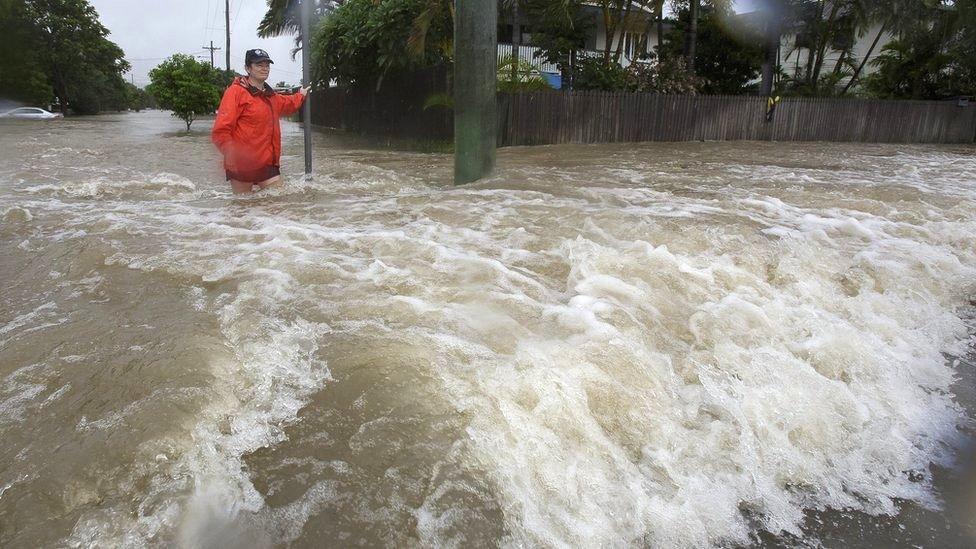
Townsville has received more than a metre of rain in just a week
The Townsville Bulletin newspaper said low-lying properties were being flooded, external, and troops on boats were searching for residents in need of help.
Between 15cm and 25cm of rain had fallen on the city since Sunday morning, the newspaper said.
Cars and livestock have already been swept away around the coastal city in the state of Queensland.
"Conditions will change rapidly and continuously. Stay informed, look for updates and follow advice of emergency services, external," the Australian Bureau of Meteorology said.
It added that the dam would release up to 1,900 cubic metres of water a second, a "dangerously high" amount.
Thousands of residents in the area have already been affected, some left without power and others cut off by flooded roads.
Images and footage shared on social media show people wading through waist-high water in the streets, external.
Josh Bavas, a reporter with ABC News, posted a video showing floodwater pouring through a shopping centre car park.
Allow X content?
This article contains content provided by X. We ask for your permission before anything is loaded, as they may be using cookies and other technologies. You may want to read X’s cookie policy, external and privacy policy, external before accepting. To view this content choose ‘accept and continue’.

The army has been helping to protect homes with sandbags, while rescue teams have been evacuating people using rafts.
Northern Queensland has a tropical climate and experiences monsoon rain from December to April. But the current conditions in the Townsville area are rare.
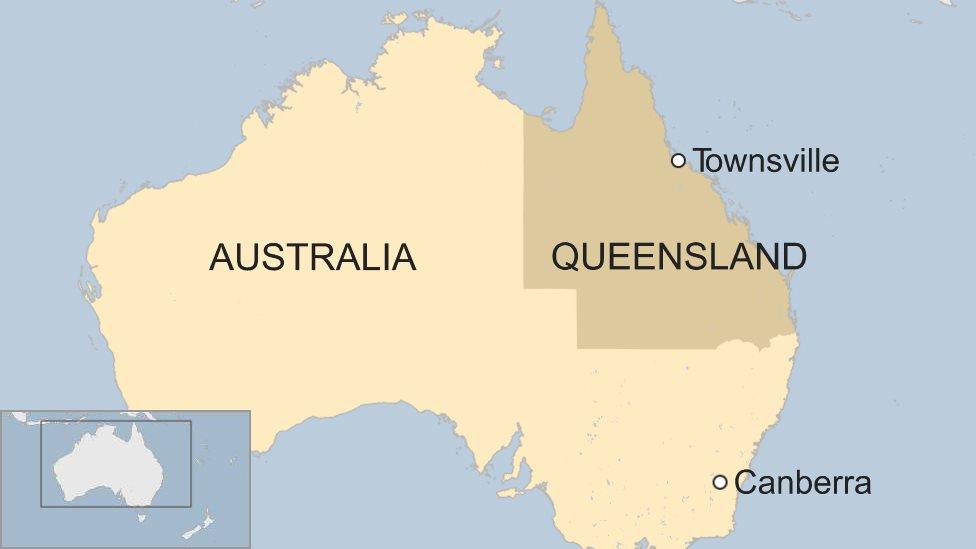
Meanwhile, parts of southern Australia are in the grip of a severe drought.
January was the hottest month on record for Australia as a whole, with the southern city of Adelaide reaching a record 47.7C.
The heat has caused bushfires and a rise in hospital admissions.
Several wildlife species have also suffered, with reports of mass deaths of wild horses, native bats and fish in drought-affected areas.
- Published2 February 2019
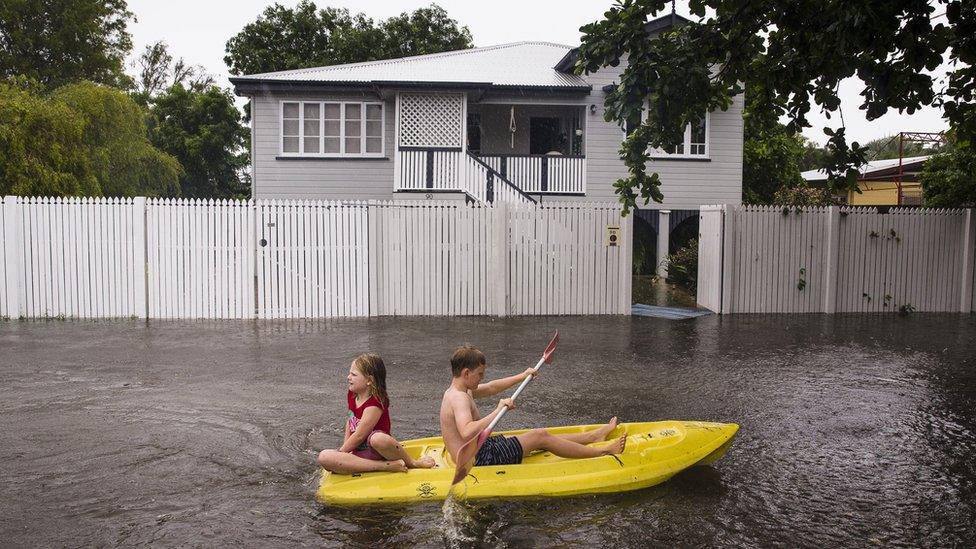
- Published24 January 2019
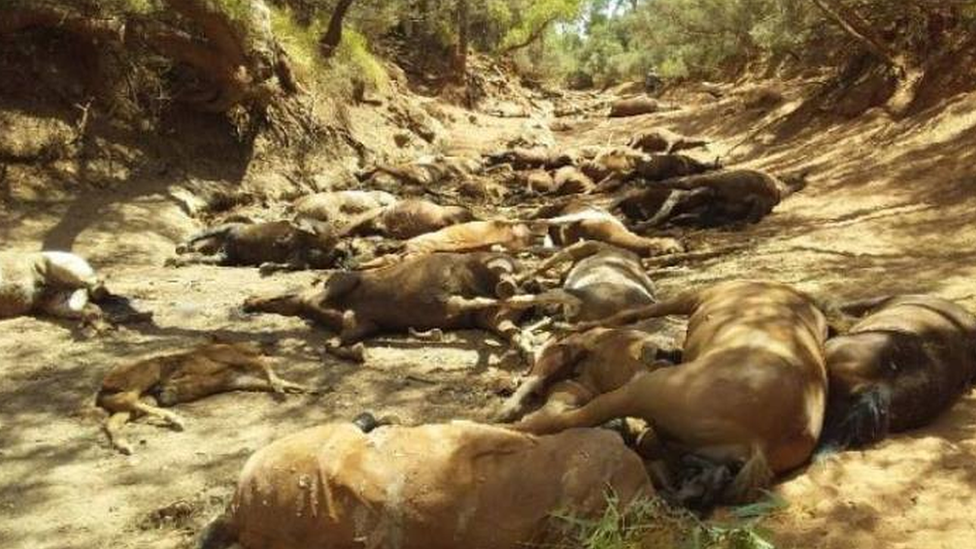
- Published18 January 2019
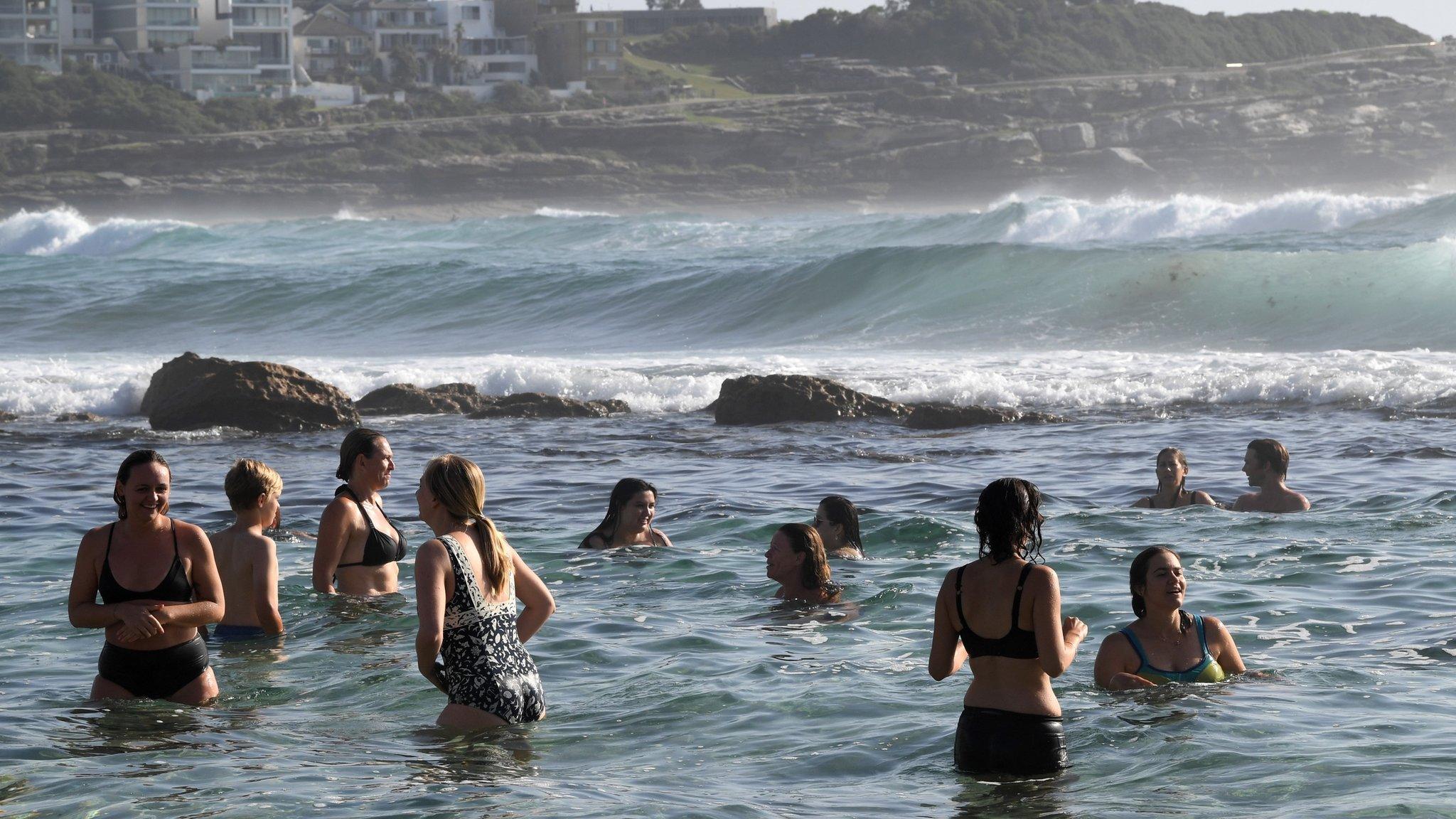
- Published31 December 2018
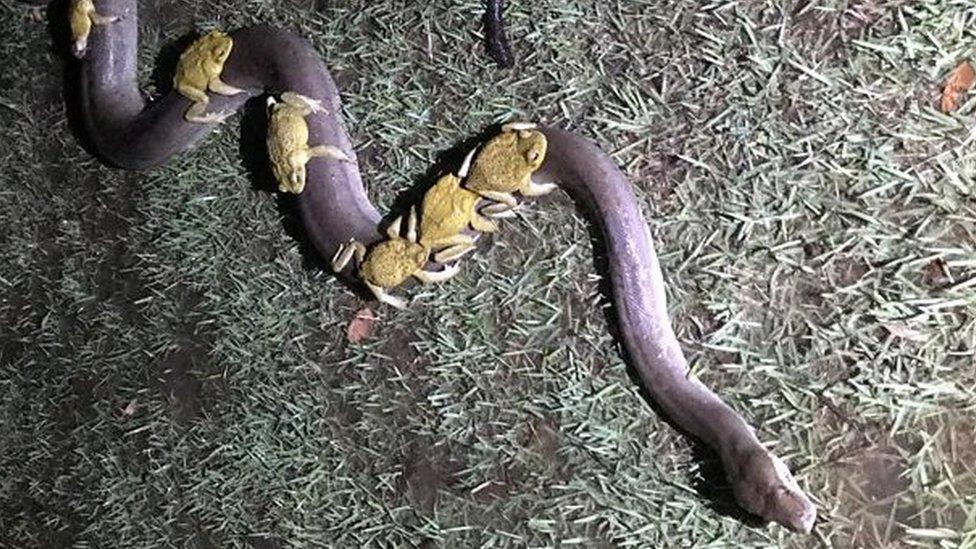
- Published8 December 2018
